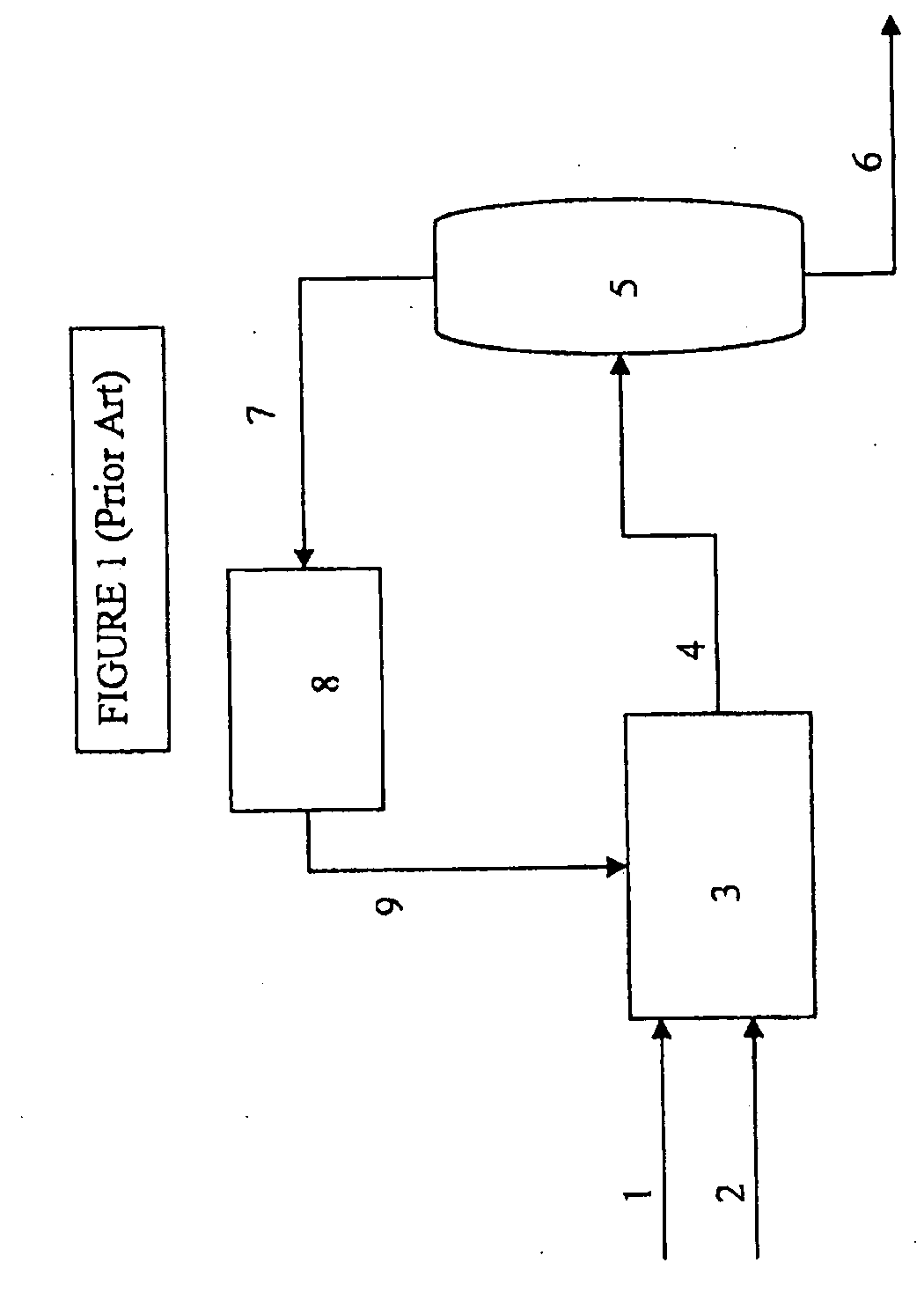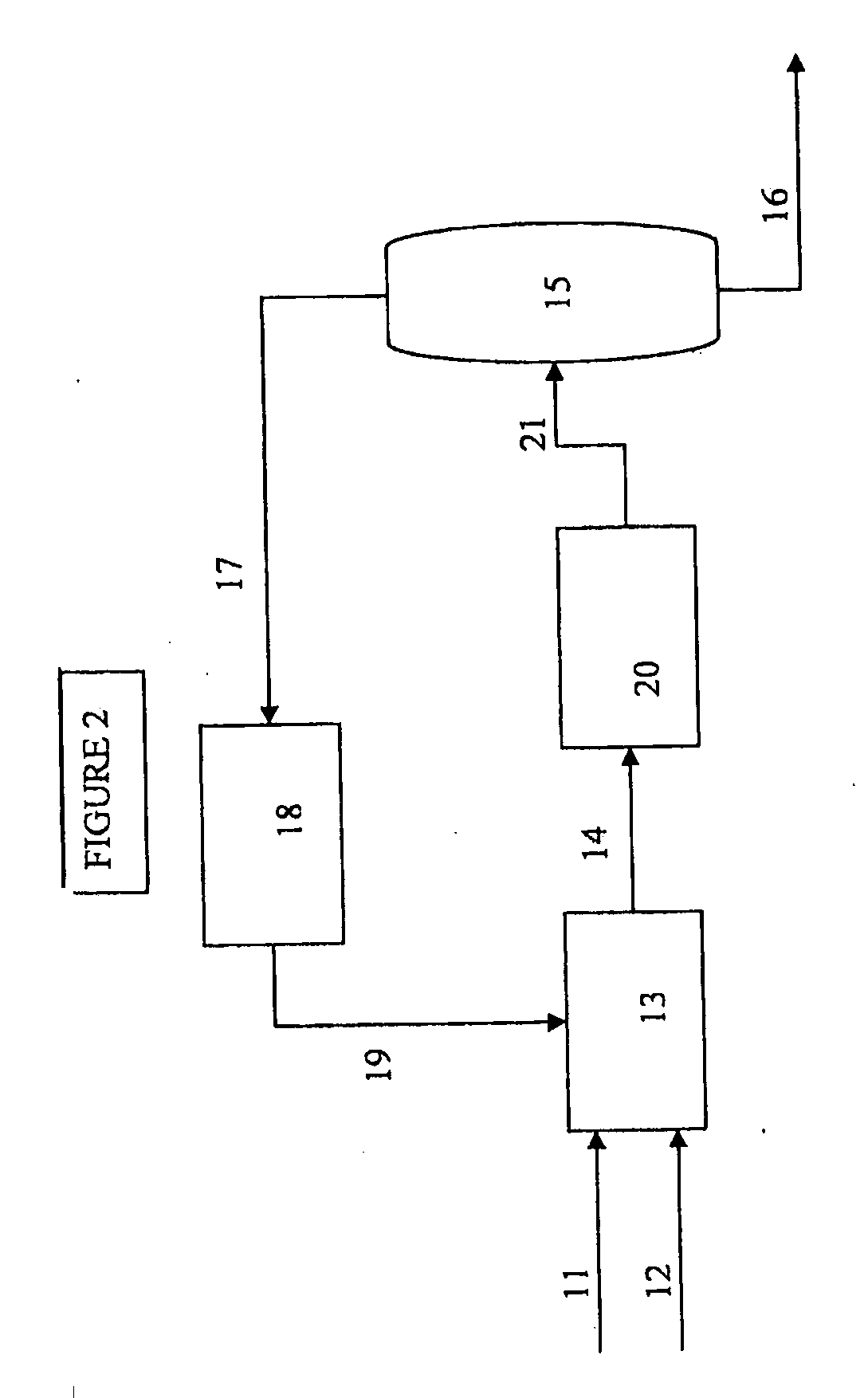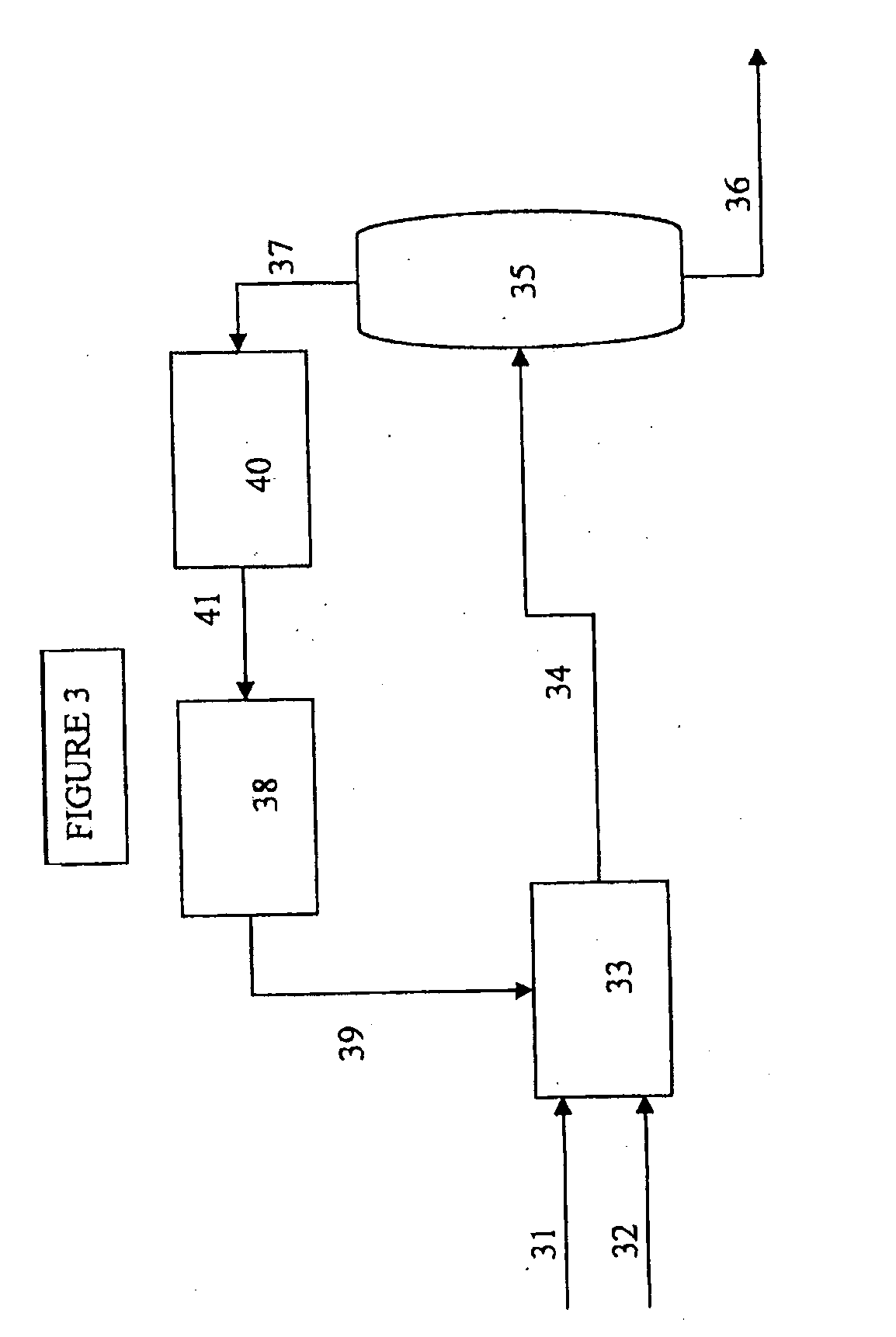Use of Chemical Reaction to Separate Ethylene FromEthane in Ethane-Base Processes to Produce Acetic Acid
a technology of ethane and chemical reaction, which is applied in the direction of physical/chemical process catalysts, metal/metal-oxide/metal-hydroxide catalysts, hydrocarbon preparation catalysts, etc., can solve the problems of high carbon oxide oxidation efficiency, poor efficiencies, and high losses of cox byproducts in the acetic acid reactor, so as to reduce the ethylene content
- Summary
- Abstract
- Description
- Claims
- Application Information
AI Technical Summary
Benefits of technology
Problems solved by technology
Method used
Image
Examples
Embodiment Construction
[0011]The present invention provides a process for selectively preparing acetic acid from the oxidation of ethane. One byproduct of the ethane oxidation reaction is ethylene. It is an objective of this application to remove as much produced ethylene from the system so as to improve the overall efficiencies of the entire acetic acid production process.
[0012]The oxidation of ethane can be carried out in a fluidized bed or in a fixed bed reactor. For use in a fluidized bed, the catalyst is normally ground to a particle size in the range from 10 to 200 μm or prepared by spray drying.
[0013]The gaseous feedstock, and any recycle gas combined with said feedstock gas, contains primarily ethane, but may contain some amount of ethylene, and is fed to the reactor as a pure gas or in a mixture with one or more other gases. Suitable examples of such additional or carrier gases are nitrogen, methane, carbon monoxide, carbon dioxide, air and / or steam. The gas containing molecular oxygen may be air...
PUM
| Property | Measurement | Unit |
|---|---|---|
| temperature | aaaaa | aaaaa |
| temperature | aaaaa | aaaaa |
| temperatures | aaaaa | aaaaa |
Abstract
Description
Claims
Application Information
 Login to View More
Login to View More - R&D
- Intellectual Property
- Life Sciences
- Materials
- Tech Scout
- Unparalleled Data Quality
- Higher Quality Content
- 60% Fewer Hallucinations
Browse by: Latest US Patents, China's latest patents, Technical Efficacy Thesaurus, Application Domain, Technology Topic, Popular Technical Reports.
© 2025 PatSnap. All rights reserved.Legal|Privacy policy|Modern Slavery Act Transparency Statement|Sitemap|About US| Contact US: help@patsnap.com



